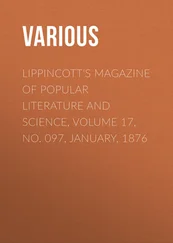The reliquism of modern times dates its origin from the centuries immediately preceding the Crusades. The first pilgrims to the Holy Land brought back to Europe thousands of apocryphal relics, in the purchase of which they had expended all their store. The greatest favourite was the wood of the true cross, which, like the oil of the widow, never diminished. It is generally asserted, in the traditions of the Romish Church, that the Empress Helen, the mother of Constantine the Great, first discovered the veritable "true cross" in her pilgrimage to Jerusalem. The Emperor Theodosius made a present of the greater part of it to St. Ambrose, Bishop of Milan, by whom it was studded with precious stones, and deposited in the principal church of that city. It was carried away by the Huns, by whom it was burnt, after they had extracted the valuable jewels it contained. Fragments, purporting to have been cut from it were, in the eleventh and twelfth centuries, to be found in almost every church in Europe, and would, if collected together in one place, have been almost sufficient to have built a cathedral. Happy was the sinner who could get a sight of one of them; happier he who possessed one! To obtain them the greatest dangers were cheerfully braved. They were thought to preserve from all evils, and to cure the most inveterate diseases. Annual pilgrimages were made to the shrines that contained them, and considerable revenues collected from the devotees.
Next in renown were those precious relics, the tears of the Saviour. By whom and in what manner they were preserved, the pilgrims did not often inquire. Their genuineness was vouched by the Christians of the Holy Land, and that was sufficient. Tears of the Virgin Mary, and tears of St. Peter, were also to be had, carefully enclosed in little caskets, which the pious might wear in their bosoms. After the tears the next most precious relics were drops of the blood of Jesus and the martyrs. Hair and toe-nails were also in great repute, and were sold at extravagant prices. Thousands of pilgrims annually visited Palestine in the eleventh and twelfth centuries, to purchase pretended relics for the home market. The majority of them had no other means of subsistence than the profits thus obtained. Many a nail, cut from the filthy foot of some unscrupulous ecclesiastic, was sold at a diamond's price, within six months after its severance from its parent toe, upon the supposition that it had once belonged to a saint. Peter's toes were uncommonly prolific, for there were nails enough in Europe, at the time of the Council of Clermont, to have filled a sack, all of which were devoutly believed to have grown on the sacred feet of that great apostle. Some of them are still shown in the cathedral of Aix-la-Chapelle. The pious come from a distance of a hundred German miles to feast their eyes upon them.
At Port Royal, in Paris, is kept with great care a thorn, which the priests of that seminary assert to be one of the identical thorns that bound the holy head of the Son of God. How it came there, and by whom it was preserved, has never been explained. This is the famous thorn, celebrated in the long dissensions of the Jansenists and the Molenists, and which worked the miraculous cure upon Mademoiselle Perrier: by merely kissing it, she was cured of a disease of the eyes of long standing. (Voltaire, Siecle de Louis XIV.)
What traveller is unacquainted with the Santa Scala, or Holy Stairs, at Rome? They were brought from Jerusalem along with the true cross, by the Empress Helen, and were taken from the house which, according to popular tradition, was inhabited by Pontius Pilate. They are said to be the steps which Jesus ascended and descended when brought into the presence of the Roman governor. They are held in the greatest veneration at Rome: it is sacrilegious to walk upon them. The knees of the faithful must alone touch them in ascending or descending, and that only after they have reverentially kissed them.
Europe still swarms with these religious relics. There is hardly a Roman Catholic church in Spain, Portugal, Italy, France, or Belgium, without one or more of them. Even the poorly endowed churches of the villages boast the possession of miraculous thigh-bones of the innumerable saints of the Romish calendar. Aix-la-Chapelle is proud of the veritable chasse, or thigh-bone of Charlemagne, which cures lameness. Halle has a thighbone of the Virgin Mary; Spain has seven or eight, all said to be undoubted relics. Brussels at one time preserved, and perhaps does now, the teeth of St. Gudule. The faithful, who suffered from the tooth-ache, had only to pray, look at them, and be cured. Some of these holy bones have been buried in different parts of the Continent. After a certain lapse of time, water is said to ooze from them, which soon forms a spring, and cures all the diseases of the faithful. At a church in Halle, there is a famous thigh-bone, which cures barrenness in women. Of this bone, which is under the special superintendence of the Virgin, a pleasant story is related by the incredulous. There resided at Ghent a couple who were blessed with all the riches of this world, but whose happiness was sore troubled by the want of children. Great was the grief of the lady, who was both beautiful and loving, and many her lamentations to her husband. The latter, annoyed by her unceasing sorrow, advised her to make a pilgrimage to the celebrated chasse of the Virgin. She went, was absent a week, and returned with a face all radiant with joy and pleasure. Her lamentations ceased, and, in nine months afterwards, she brought forth a son. But, oh! the instability of human joys! The babe, so long desired and so greatly beloved, survived but a few months. Two years passed over the heads of the disconsolate couple, and no second child appeared to cheer their fire-side. A third year passed away with the same result, and the lady once more began to weep. "Cheer up, my love," said her husband, "and go to the holy chasse, at Halle; perhaps the Virgin will again listen to your prayers." The lady took courage at the thought, wiped away her tears, and proceeded on the morrow towards Halle. She was absent only three days, and returned home sad, weeping, and sorrow-stricken. "What is the matter?" said her husband; "is the Virgin unwilling to listen to your prayers?" "The Virgin is willing enough," said the disconsolate wife, "and will do what she can for me; but I shall never have any more children! The priest! the priest!—He is gone from Halle, and nobody knows where to find him!"
It is curious to remark the avidity manifested in all ages, and in all countries, to obtain possession of some relic of any persons who have been much spoken of, even for their crimes. When William Longbeard, leader of the populace of London, in the reign of Richard I, was hanged at Smithfield, the utmost eagerness was shown to obtain a hair from his head, or a shred from his garments. Women came from Essex, Kent, Suffolk, Sussex, and all the surrounding counties, to collect the mould at the foot of his gallows. A hair of his beard was believed to preserve from evil spirits, and a piece of his clothes from aches and pains.
In more modern days, a similar avidity was shown to obtain a relic of the luckless Masaniello, the fisherman of Naples. After he had been raised by mob favour to a height of power more despotic than monarch ever wielded, he was shot by the same populace in the streets, as if he had been a mad dog. His headless trunk was dragged through the mire for several hours, and cast at night-fall into the city ditch. On the morrow the tide of popular feeling turned once more in his favour. His corpse was sought, arrayed in royal robes, and buried magnificently by torch-light in the cathedral, ten thousand armed men, and as many mourners, attending at the ceremony. The fisherman's dress which he had worn was rent into shreds by the crowd, to be preserved as relics; the door of his hut was pulled off its hinges by a mob of women, and eagerly cut up into small pieces, to be made into images, caskets, and other mementos. The scanty furniture of his poor abode became of more value than the adornments of a palace; the ground he had walked upon was considered sacred, and, being collected in small phials, was sold at its weight in gold, and worn in the bosom as an amulet.
Читать дальше












